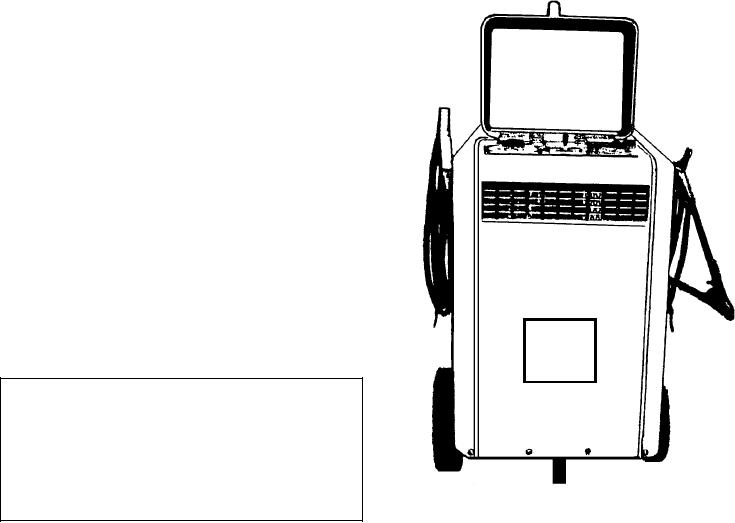
hydrometer, along with a thermometer and a table of
The main disadvantage of constant current
correction values for making calculations.
charging is that if the charging current is set too high, or
if the battery is overcharged, the battery can overheat
CHARGING
and possibly damage the plates.
When a discharged battery is brought to the battery
Constant Potential (Voltage) Charging
shop, it should be recharged immediately. There are
several methods for doing so, but the two principal
Constant potential charging is done by a
methods are (1) constant potential charging and (2)
motor-generator set or a transformer-rectifier. With
constant current charging. With either method, you can
constant potential charging, the initial current flow to a
charge a single battery or multiple batteries at the same
discharged battery is high because of the difference
time. In constant current charging, multiple batteries
between the battery voltage and the output voltage of
are connected in series. In constant potential charging,
the charger. As the state of charge of the battery
multiple batteries are connected in parallel. The
increases, its voltage increases, reducing the difference
constant potential method of charging is used most
in voltages between the charger and the battery. This
often because it is the simplest method, and because
decreasing voltage differential causes the charging
batteries do not require constant observation while
current to gradually taper off to a very low value at the
being charged.
time the battery is fully charged.
Constant potential chargers are available in many
Constant Current Charging
designs and capacities--both stationary and portable.
The one shown in figure 6-11 is portable. Constant
In the constant current method, the battery is
potential chargers are common in support equipment
connected to a charging device that supplies a steady
work centers.
flow of dc current. A rheostat is built into the charger to
adjust the current flow, and once the rheostat is set, the
current remains constant. When using this method of
charging a battery, check the battery frequently,
particularly near the end of the charging period. When
the battery is gassing freely and the specific gravity
remains constant for 2 hours, the battery is fully
charged.
NOTE: The term gassing refers to a condition that
occurs while the battery is being charged. When a
battery is being charged, a portion of the energy breaks
down the water in the electrolyte. Hydrogen is released
at the negative plates and oxygen at the positive plates.
These gases bubble up through the electrolyte and
collect in the air space at the top of the cell. If violent
gassing occurs when the battery is first placed on
charge, the charging rate is too high. If the rate is not too
high, steady gassing develops as the charging proceeds,
12 VOLT
indicating that the battery is nearing a fully charged
TESTER
condition.
AND
CHARGER
WARNING
A mixture of hydrogen and air can be
dangerously explosive. No smoking, electric
sparks, or open flames should be permitted near
ASf06011
charging batteries.
Figure 6-11.--Potable constant potential battery charger.
6-11

